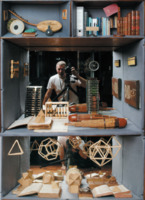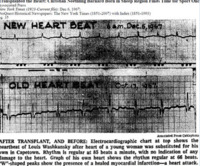Items
Site
The Medicine Chest
Is Part Of is exactly
Mathematics and Applied Mathematics
-

Page 135 of the Curiosity CLXXV catalogue
"Peering into one of them could, for instance, reveal musical instruments from the South African College of Music’s Kirby collection; old wooden mathematical models of abaci and polyhedrons from the Maths department; mobiles demonstrating platonic solids made by mechanical engineering students; publications by a UCT Professor of Astronomy; a sign pointing to ward D10 from the old section of Groote Schuur Hospital; glass slides once used as a teaching aid for art history at Michaelis; bird ringing material from the Avian Demography unit; and a bottle-brush plant labelled by the son of one of the curators" (Liebenberg 2021: 179). -

Falling stars
Marine biologists studying whalesharks use the pattern-recognition technique, developed in 1986, that astronomers use to analyze data from the Hubble Space Telescope. Studying the spatial relationships between a whaleshark's spots form the basis for creating a unique identifier for each shark. -

Circumference
On June 1, 1937, Amelia Earhart took off from Oakland, California, on an eastbound flight around the world. It was her second attempt to become the first pilot ever to circumnavigate the globe. -

Electrocardiograph of first heart transplant
“The ventricular peaks would shoot up as in wild flight, and their intermediate planes would begin to jumble against one another like the sudden crashing of cars on a freight-train. The heart’s beautiful symmetry would then be reduced to an erratic green line of wild jerks until it entered the final isoelectric phase resembling a sawtooth – jagged lines of the heart seeking to rise like a dying bird, fluttering upward, only to fall once again onto its flat plane of death” (Barnard in Young 2002: 79-80). -

Museum of Natural History Oxford
On a sunny afternoon, July 4th 1862, an Oxford don took out four friends, for a rowing expedition up the Thames. The don was the Oxford mathematician, photographer and storyteller, Charles Dodgeson (better known by his pen name, Lewis Carroll) and his friends were the Rev. Robinson Duckworth and three children – Alice Liddell, aged 10, and her sisters. During the afternoon Dodgeson spun out a series of fantastic yarns incorporating friends and familiar places in Oxford, mathematical riddles, literary allusions and countless references to natural history.


